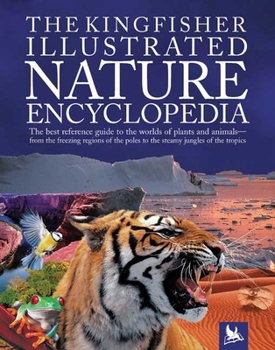The Kingfisher Illustrated Nature Encyclopedia
The incredible diversity of life on Earth--from microscopic single-celled organisms to giant redwoods and blue whales-is studied in more than 1,000 stunning photographs and illustrations.
Format:Hardcover
Language:English
ISBN:0753455765
ISBN13:9780753455760
Release Date:April 2004
Publisher:Kingfisher
Length:320 Pages
Weight:3.45 lbs.
Dimensions:1.1" x 9.0" x 11.1"
Age Range:9 to 11 years
Grade Range:Grades 4 to 6
Customer Reviews
1 rating
Lavishly illustrated and wide ranging
Published by Thriftbooks.com User , 15 years ago
The book is divided into three sections. The first (A planet apart) occupies about fifty pages, starting with the formation of the Earth and giving brief introductions to early life forms, the biosphere, the basics of life on land and in water, climatic change, seasons, weather, volcanoes, evolution, genes, DNA and extinction. Many of these subjects need whole books to cover them properly but what's here serves as a good introduction. The second section (A living world) occupies about 100 pages. It explores the many different forms of life, both plants and animals, that exist on Earth, in the sea or on land, explaining the interaction between different species. The section begins by explaining how life is classified. From a scientific perspective, the system works well, but what the scientists call a species is very often only a slight variation on another species. The remainder of the section is divided into chapters on microbes, fungi, plants and animals. You get a good idea, if you didn't know already, of how things work in nature. For example, plants don't just have flowers to look nice; those flowers serve an essential purpose. The third section (Wildlife habitats) occupies about 150 pages. It looks at each type of habitat in turn and what you can find there. So here you will find descriptions of the polar regions, hot deserts, grasslands, shrub lands, forests, rivers, lakes, wetlands, oceans, coral reefs, coasts, mountains, caves and not forgetting towns and cities - and not just in the green spaces. It is a sobering thought that the humble housefly may be the most common species of insect on our planet, thanks to us. This book tries to cover all aspects of the natural world and manages to do a fair job in a little over 300 pages. Inevitably, it can`t cover anything in depth, but it`s the kind of book that might encourage some people to take a greater interest in the world around them. Those people can progress to other books that cover topics of most interest to them in greater detail.






